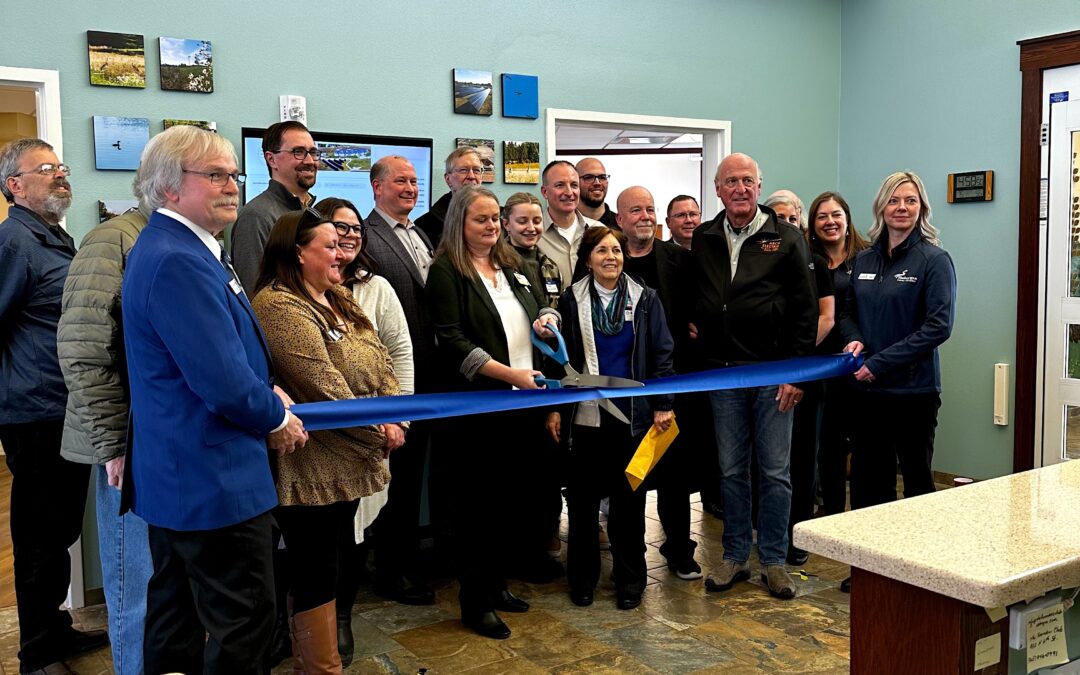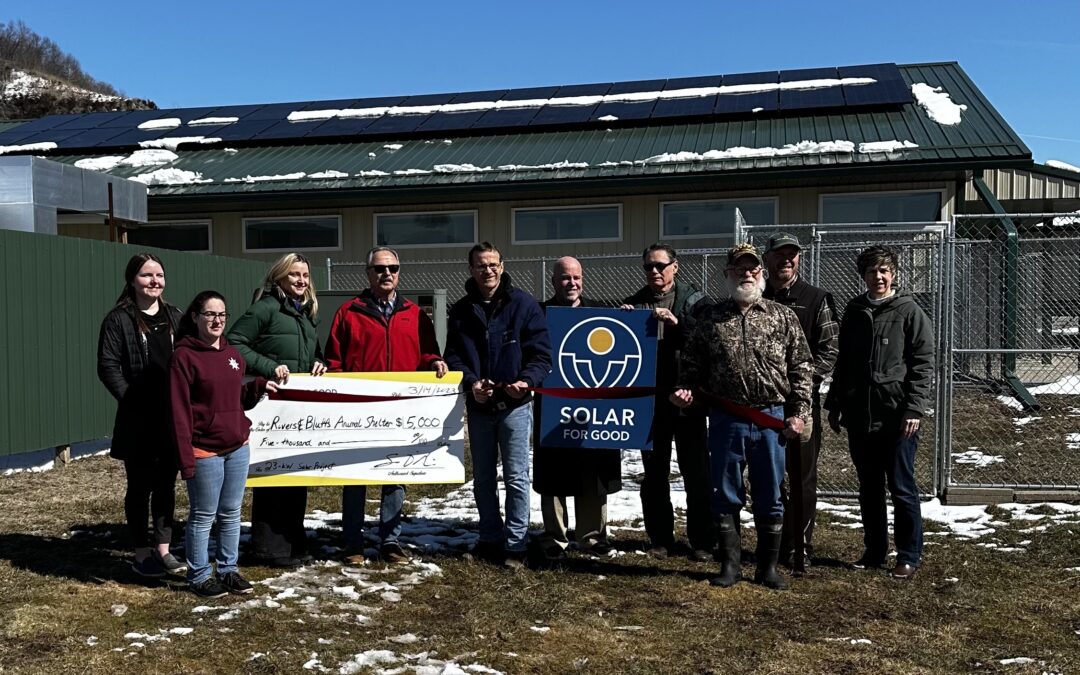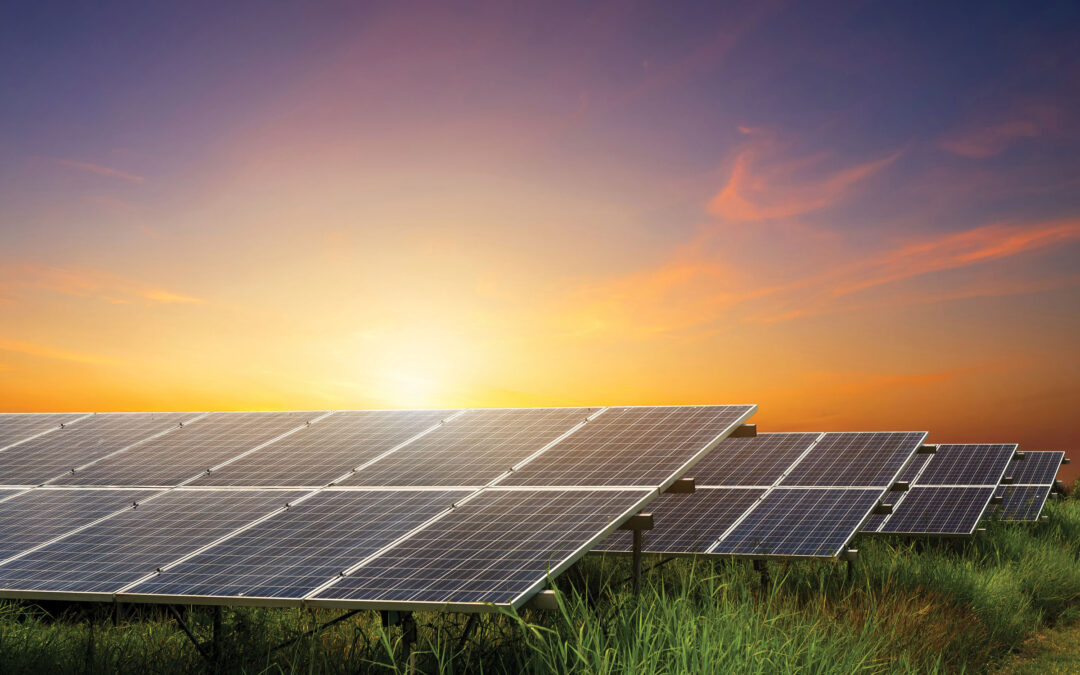
by Lauren Cohen | Mar 24, 2023 | Events, Programs, Solar
On February 7, 2023, and March 2, 2023, RENEW Wisconsin and
Midwest Renewable Energy Association (MREA) hosted two Solar Workforce Training Courses at Madison Technical College as part of the MadiSUN Solar Energy Program.
MadiSUN is the City of Madison’s solar program administered by RENEW Wisconsin.
Solar installer is one of the fastest-growing jobs in the United States. Madison has a robust solar market, and solar installers struggle to find enough qualified employees. In response to this need, RENEW Wisconsin crafted a solar workforce initiative that had two primary goals:
1. To increase the number of qualified, trained workers in our community that local solar contractors could utilize to expand the total solar capacity installed in Madison.
2. To increase family-supporting careers within communities of color and low-income communities in the City of Madison.
To fulfill these goals, RENEW Wisconsin partnered with MREA instructors to host two “Solar 100” training sessions. These classes were each a one-day (8-hour) course that introduced participants to solar photovoltaic (PV) technology and workplace safety.
The course catered to those interested in a career in solar but unsure where to begin. It provided participants with many basic skills necessary for a career in the solar industry, making them more appealing to solar installation companies.
In the future, RENEW is working to find additional opportunities for participants of the Solar 100 class to take advanced training to obtain full North American Board of Certified Energy Practitioners (NABCEP) certification. While NABCEP certification is not needed to become a solar energy professional, it gives individuals more opportunities to further their careers.
Thank you to the City of Madison, MREA, and the students who made this initiative a success. We hope to provide more training opportunities in the future to advance clean energy in Wisconsin.

by Michael Vickerman | Mar 23, 2023 | Action Alert, Advocacy, Public Service Commission, Solar, Utility Scale
Elk Creek Solar is a 300-megawatt solar project with a 76.6 MW battery energy storage system proposed in the Township of Springbrook in Dunn County, Wisconsin. As designed, Elk Creek Solar would supply homegrown, affordable, emission-free electricity to power the equivalent of approximately 60,000 homes. If approved, Elk Creek will begin producing clean power by the end of 2025. For more information, visit the application HERE. If you would like to learn more about how Elk Creek Solar is engaging with the community, check out their website HERE. If approved, Elk Creek will begin producing clean power by the end of 2025. RENEW Wisconsin submitted testimony in support of Elk Creek Solar, which you can access HERE.
Solar projects larger than 100 megawatts must gain approval from the Public Service Commission of Wisconsin (PSCW) before they can proceed to construction. Along the way, there are opportunities for public comment at the township, county, and state levels.
Please help us demonstrate Wisconsin’s enthusiastic support for solar power in general and this project in particular by submitting a comment in support of Elk Creek Solar. Be sure to specifically reference the project and the benefits that it can bring to Wisconsin. The deadline for submitting comments is May 12, 2023.

by Lauren Cohen | Mar 22, 2023 | Solar, Solar for Good
On Tuesday, March 21, Sheboygan Senior Community (SSC), Inc. held a solar dedication ceremony for their 198-kilowatt, newly constructed solar array. Sheboygan Senior Community is a faith-based, nonprofit continuum of care facility providing respite, short-term rehab, assisted living, skilled nursing, and end-of-life services.
The project, installed by Arch Electric, consists of 448 solar panels and will produce roughly 267,000 kWh of annual energy. It is projected to offset over 28% of the organization’s current consumption. Unlike many other solar projects, Sheboygan Senior Community’s array was installed as a ground mount on approximately 1.5 acres.
“What sets the Sheboygan Senior Community Project apart from any other commercial solar project in Wisconsin is the battery or energy storage system,” says Keith Conway, Energy Consultant at Arch Solar. “This system is designed to shave peak demand charges from the utility, thus reducing their monthly electric bill. The SSC is setting an example of what is possible to the rest of the state.”
This project was brought to fruition largely due to a generous commercial benefactor, who provided 95% of the funding for the senior community’s project. The organization worked with Legacy Solar Cooperative to secure this funding. By using a private investor, they were able to utilize the 26% Investment Tax Credit which was unavailable to not-for-profit organizations before the passage of the Inflation Reduction Act.
“Legacy Solar Cooperative has been very pleased to work with everyone on this wonderful project. It does indeed take a village,” says Tony Hartman, Director of Business Development at Legacy Solar Cooperative. “SSC’s leadership team especially made this project a joy, from start to finish, showing consideration for their neighbors as well as campus residents.” In addition to facilitating the financial arrangement, the cooperative provided consulting services, education, and outreach assistance.
The Sheboygan Senior Community also received a panel grant from RENEW Wisconsin’s Solar for Good program. The grant provided 150 of the 448 solar modules necessary for the project. “SSC, Wisconsin’s Office of Energy Innovation Grant Program, the Couillard Solar Foundation, Arch Solar, and key local support brought this fantastic clean energy and battery project to life, demonstrating patience through the pandemic period,” continued Hartman.
“Renewable energy is not only the right thing to do for the environment and our community, but it provides SSC with the opportunity to enjoy substantially lower utility bills for years to come,” says Stephanie Goetz, Director of Operations at Sheboygan Senior Community. “These savings will go towards expanding our campus to continue filling the needs in our community for senior living services. Our hope is that our Solar for Seniors project can be used as an example for other healthcare nonprofit organizations.”

by Lauren Cohen | Mar 20, 2023 | Solar, Solar for Good
On Tuesday, March 14th, Rivers and Bluffs Animal Shelter held a ribbon cutting ceremony for their 23-kilowatt, newly constructed solar array. Rivers and Bluffs Animal Shelter is a non-for-profit organization that provides quality care for companion animals in need and educates the community about responsible pet ownership.
The project, installed by Olson Solar, consists of 54 solar panels and will produce over 24,000 kWh of annual energy. It is projected to offset approximately 97% of the animal shelter’s consumption.
This project marked Olson Solar’s first array to be installed on an animal shelter. “With an expected lifespan of 35-40 years, their system will produce more than $100,000 in energy savings,” said Michael Palen of Olson Solar Energy. “The clean renewable energy produced by their system is equivalent to saving over 46,000 gallons of gas!”
The decision to invest in the future of their shelter with solar was made possible due to a generous donation made in late 2021. This donation, coupled with the shelter’s continued increases in energy consumption, presented an opportune time to “go solar”.
“Anything we can do to reduce our operating costs is an example to all who support us that we are doing our part by investing wisely in our animal shelter,” said David Ralph, board member of Rivers and Bluffs Animal Shelter.
In addition to the donation, RENEW Wisconsin’s Solar for Good program provided Rivers and Bluffs Animal Shelter with a $5,000 grant to assist with the upfront costs of the solar array. The project also received funding assistance through Focus on Energy incentives.
“Renewable energy projects like these can be a huge help to the community,” said Sam Dunaiski, Executive Director of RENEW Wisconsin. “Rivers and Bluffs will be able to take the money saved on their utility bills and immediately redirect it into caring for animals in the community.”

by Michael Vickerman | Feb 22, 2023 | Action Alert, Advocacy, Public Service Commission, Solar, Utility Scale
High Noon Solar Energy Center is a 300 megawatt solar project with a 165 MW battery energy storage system proposed in southwest Columbia County, near Portage. As designed, High Noon would supply homegrown, affordable, emission-free electricity to power the equivalent of approximately 58,000 homes. If approved, High Noon would begin producing clean power by the end of 2025. For more information, visit the application here and RENEW Wisconsin’s testimony here.
An exemplary testimony to the benefits this project offers Columbia County comes from PSC comments submitted by Larry Nelson, a 4th generation farmer in Lodi, Wisconsin.
I support High Noon Solar. I am a participating landowner and 4th generation farmer on a century family farm. We grow corn and soybeans on our farm. 100% of our Corn goes to ethanol. With the auto manufacturers transitioning to electric vehicles, I am very concerned as to what this will do to our ethanol market and increased demand for electricity. Since our family started farming in the 1800s, there has been a lot of changes to agriculture and ways to be profitable. Our family has adapted over the years to remain in agriculture and stay profitable. This is not an easy task as many family farms have disappeared over the years. The High Noon Solar project is an opportunity for us to diversify our farm income. In my opinion this is just another way to farm the sun, just as we have done to grow crops over the years. Our farmland in this project does not disappear. This is a temporary use of our land. It will be seeded down and have solar arrays on it. By seeding it down the land will be protected from erosion and runoff. Our land naturally drains and we have NO DRAIN TILE. We use commercial fertilizers on our farm along with chemicals as needed. We do not have any livestock so no manure is spread on our land. The environmental assessment has been done. There are no significant impact. This project will bring beneficial jobs into our community and will have a positive economic impact. This will also bring in 1.2 million in annual tax payments to Columbia County and participating townships. There are many financial benefits from this project in all aspects but the most important one is this is good for our environment and we are doing our part to fight climate change for future generations. Thank you for your consideration.
Larry Nelson
Lodi, Wisconsin
Proposed power plants larger than 100 megawatts must gain approval from the Public Service Commission of Wisconsin (PSCW) before they can proceed to construction. Along the way, there are opportunities for public comment at the township, county, and state levels. Please help us demonstrate Wisconsin’s enthusiastic support for solar power in general and this project in particular by submitting a comment in support of the High Noon Solar Energy Center. Be sure to specifically reference the project and the benefits that it can bring to Wisconsin. The deadline for submitting comments is March 1, 2023.
[Note: Your comments need not be as lengthy as the sample below, which was drafted to present various supporting perspectives on health, environmental sustainability, and rural economic development. We encourage you to articulate the points that matter most to you. But it’s OK to frame your comments at a very high level if that’s what you’re comfortable with.]
SAMPLE COMMENT
I write in support of the High Solar Energy Center, presently under review at Docket No. 9814-CE-100. This project, like other combined solar and battery storage projects approved by the PSCW in recent years, would protect human health and the natural environment while strengthening the state’s economy.
Consistent with Wisconsin’s Energy Priorities Law, High Noon will provide these benefits by converting locally available, noncombustible renewable energy resource—sunshine—to electricity, and feeding zero-emission into existing power lines and the battery energy storage system onsite. As configured, High Noon will displace fossil fueled generation at all times, which will measurably reduce the volume of airborne pollutants and greenhouse gases discharged from Wisconsin sources.
In-state solar projects can be counted on to energize the local economy through increased revenues to local governments while diversifying our resource mix and bringing Wisconsin a step closer to energy self-sufficiency. The economic benefits come in two forms. Initially, High Noon will create between 600 and 700 jobs in Wisconsin during the project’s construction phase. Second, once it has been placed in service, High Noon will provide rental income to participating landowners as well as payments in lieu of taxes to local jurisdictions hosting the project. Projects like these can also provide an economic hedge to farmers and rural landowners whose products are subject to commodity market forces and weather conditions that are beyond their control and can often be unforgiving.
In addition to the health and environmental benefits referenced above, High Noon will also deliver benefits to the land within in the project’s footprint. The developer proposes to revegetate the land with a mix of deep-rooted plants under and around the installation. Managing the land in this fashion will improve soil health, reduce erosion, and increase biodiversity. Finally, High Noon will have no measurable impact on local agricultural output, as crop yields per acre in Columbia County have steadily increased since 1960.
I respectfully encourage the PSCW to rule that High Noon Solar Energy Center is in the public interest and issue a permit enabling the project to proceed to construction. Thank you for your consideration of my views.

by Michael Vickerman | Jan 5, 2023 | Action Alert, Advocacy, Public Service Commission, Solar, Utility Scale
Northern Prairie is a 101-megawatt solar project proposed for development in the Town of Cylon in St. Croix County. As designed, Northern Prairie Solar would supply homegrown, affordable, emission-free electricity to power the equivalent of approximately 25,000 homes. If approved, Northern Prairie will begin producing clean power by the end of 2024. For more information, visit the application summary here and RENEW Wisconsin’s testimony here.
Solar projects larger than 100 megawatts must gain approval from the Public Service Commission of Wisconsin (PSCW) before they can proceed to construction. Along the way, there are opportunities for public comment at the township, county, and state levels. Please help us demonstrate Wisconsin’s enthusiastic support for solar power in general and this project in particular by submitting a comment in support of Northern Prairie Solar. Be sure to specifically reference the project and the benefits that it can bring to Wisconsin. The deadline for submitting comments is January 20, 2023.
[Note: Your comments need not be as lengthy as the sample below, which was drafted to present a variety of supporting perspectives relating to health, environmental sustainability, and rural economic development. We encourage you to articulate the points that matter most to you. But it’s OK to frame your comments at a very high level if that’s what you’re comfortable with.]
SAMPLE COMMENT
I write in support of the Northern Prairie Solar project, presently under review at Docket No. 9815-CE-100. Like other solar projects approved by the PSCW this decade, this project would protect human health and the natural environment while strengthening the state’s economy.
Consistent with Wisconsin’s Energy Priorities Law, Northern Prairie Solar will provide these benefits by converting a locally available, noncombustible renewable energy resource—sunshine—to electricity, feeding zero-emission energy into existing power lines. As configured, Northern Prairie’s output will displace fossil-fueled generation, which will measurably reduce the volume of airborne pollutants and greenhouse gases discharged from Wisconsin and Minnesota sources.
In-state solar projects can be counted on to energize the local economy through increased revenues to local governments while diversifying our resource mix and bringing Wisconsin a step closer to energy self-sufficiency. The economic benefits come in two forms. Initially, Northern Prairie Solar will create more than 150 jobs in Wisconsin during the project’s construction phase. Second, once placed in service, Northern Prairie will provide rental income to participating landowners and payments in lieu of taxes to local jurisdictions hosting the project. Projects like these can also provide an economic hedge to farmers and rural landowners whose products are subject to commodity market forces and weather conditions beyond their control and can often be unforgiving.
In addition to the health and environmental benefits referenced above, Northern Prairie Solar will also deliver benefits to the land within its footprint. The developer proposes to revegetate the land with a mix of deep-rooted plants under and around the installation. Managing the land in this fashion will improve soil health, reduce erosion, and increase biodiversity.
I respectfully encourage the PSCW to find that the construction of the Northern Prairie Solar project is in the public interest and issue a permit enabling the project to proceed with construction.
Thank you for your consideration of my views.





